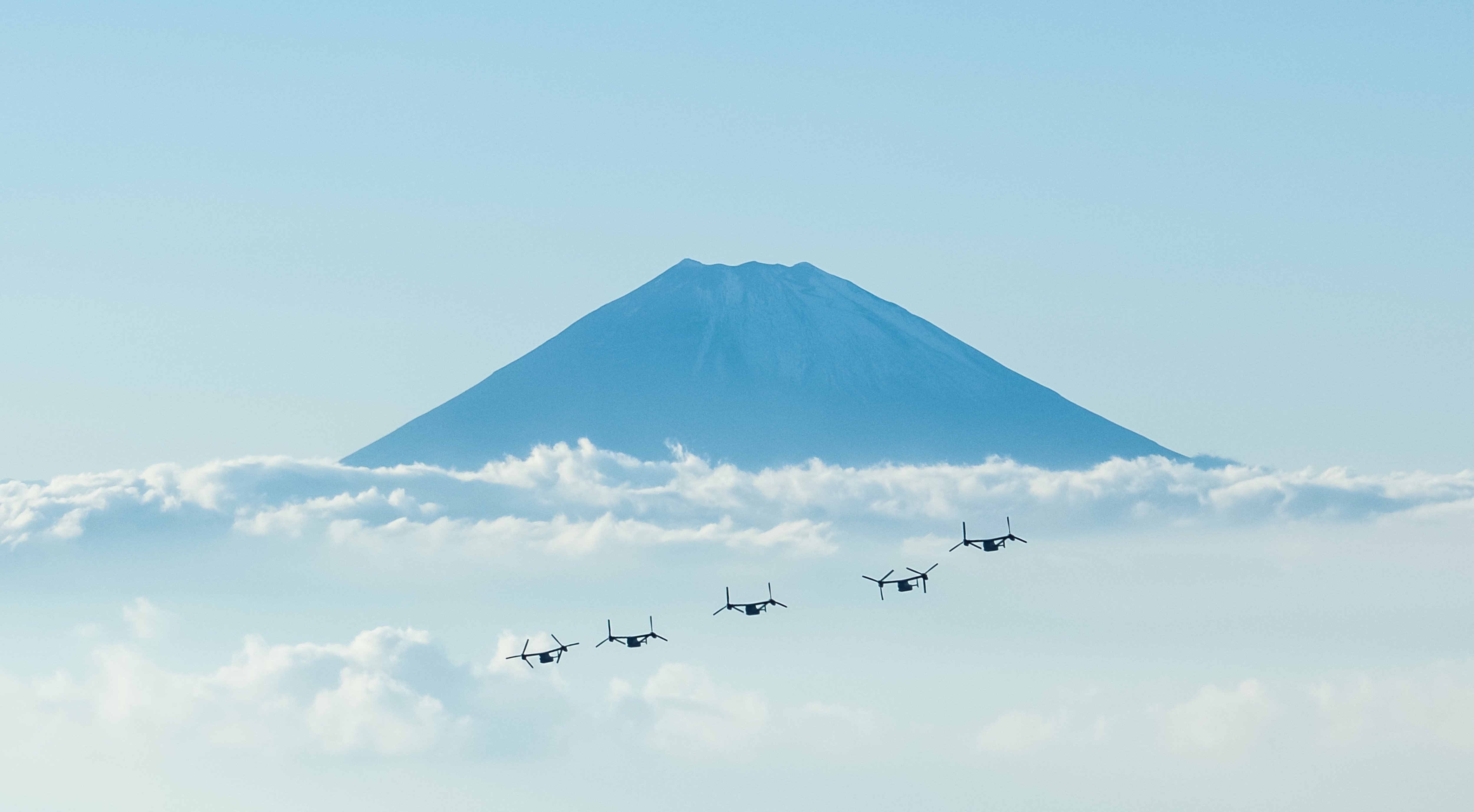
The Marine Corps in recent years has grappled with how to remain a “fight-tonight” force without enough ships to take Marines where they need to go – but a Navy effort to redesign its future fleet and an incoming administration dedicated to growing the Navy may bode well for solving this long-standing problem.
Three organizations were tasked with conducting a Future Fleet Architecture study to draw up a plan for what kinds of ships in what quantities may best help the Navy carry out missions decades down the road. The Center for Strategic and Budgetary Assessments, one of the three participants, last week unveiled one piece of that future fleet in a report called “Amphibious Operations in an Era of Precision Weapons.” Predominately focused on a high-end fight in the Pacific, the CSBA plan in some ways diverges from what Pacific Marines say they need but generally agrees that the next war will be fought against a sophisticated enemy with long-range precision weapons that will necessitate a new operational concept – and that the Navy will need more amphibious ships to support the Marines in this war.
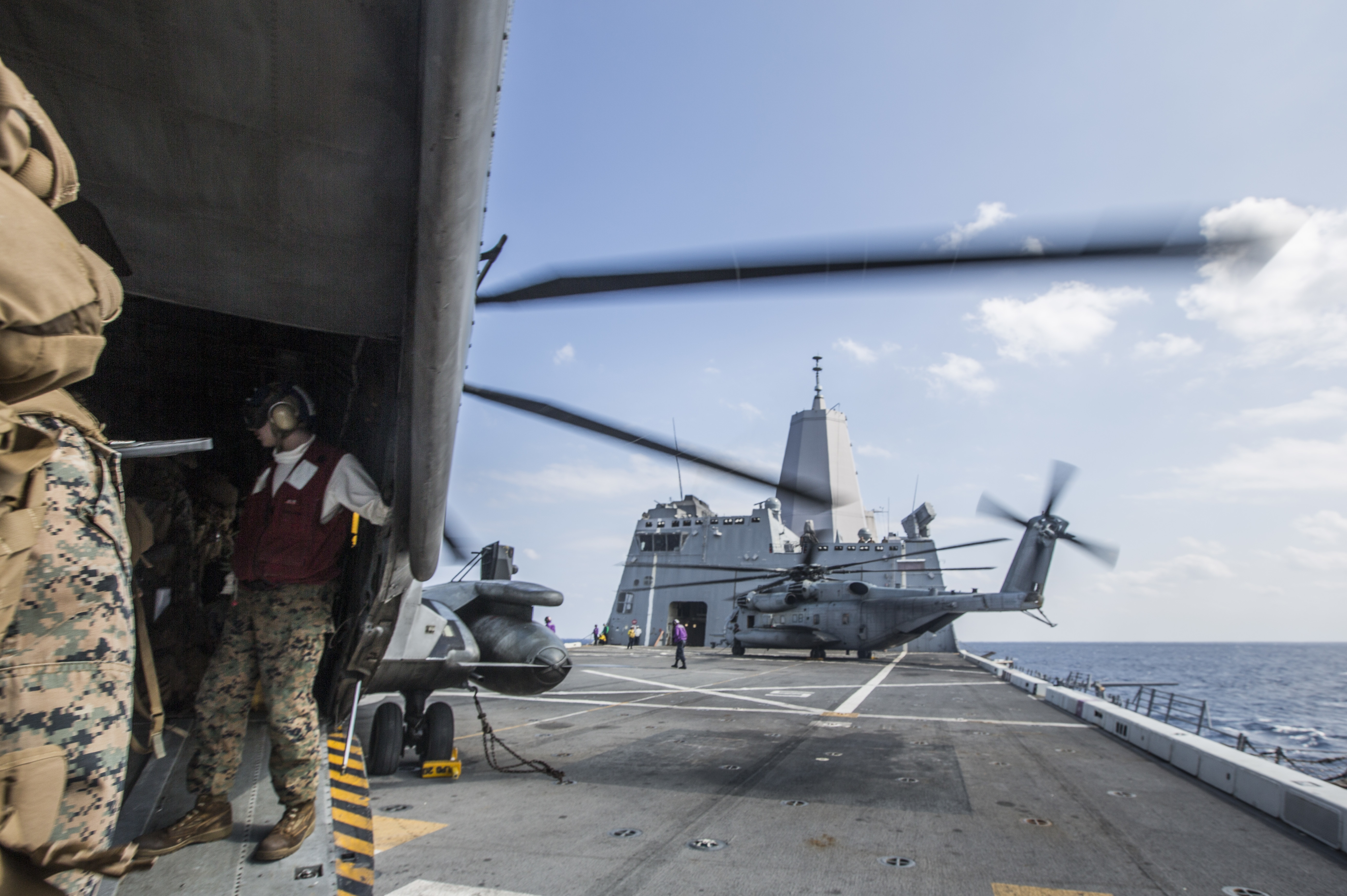
Amphibious Forces in the Pacific
“There are no short distances in the Pacific,” 3rd Marine Division Commander Maj. Gen. Richard Simcock likes to remind people. His Marines are located in Japan and Hawaii and conduct training throughout the Asia-Pacific region, with no ships or air assets dedicated to the division Marines. 3rd Marine Division can sometimes borrow amphibious ships from the 31st Marine Expeditionary Unit (MEU), also located in Japan, but more often practices operations from the sea on alternate platforms.
Simcock warned at a Marine Corps Association ground combat dinner last week that the next fight would require a division-level force, not just a MEU-sized force of three ships and 2,200 Marines, and that the Navy and Marine Corps needed to figure out sooner rather than later how to train for that type of event.
“The fight that’s coming, we’re not going to be able to get a hodge-podge hillbilly organization and just throw three MEUs together and say that’s a MEB (Marine Expeditionary Brigade) and land a landing force,” he said at the event.
“We are not training with our Navy brother. We are not doing the things that are going to carry us to victory in the fight that is clearly coming out in the Pacific right now.”
“The MEUs have done a tremendous job, but the MEUs were never designed to fight a war. In fact, they can only go up so high on the warfighting spectrum, they’re not going to go to contingency-type operations,” Simcock told USNI News after the event. Saying the MEU was the primary source of naval integration while the Marines were focused on ground wars in Iraq and Afghanistan, he added that “we did that piece of it – and we’re still doing that piece of it – very very well. It’s the larger – our war plans don’t call for MEUs, they call for divisions. And that’s the piece that we need to work to. Easily said, very hard to do. But it’s something we need to focus on and do much more of that.”
As an example, Simcock said, 3rd Marine Division recently held an amphibious exercise called Blue Chromite to rehearse fighting against a sophisticated enemy using ideas laid out in the new Marine Corps Operating Concept – but it did so with just one amphibious transport dock that it could borrow from 31st MEU for a couple days.
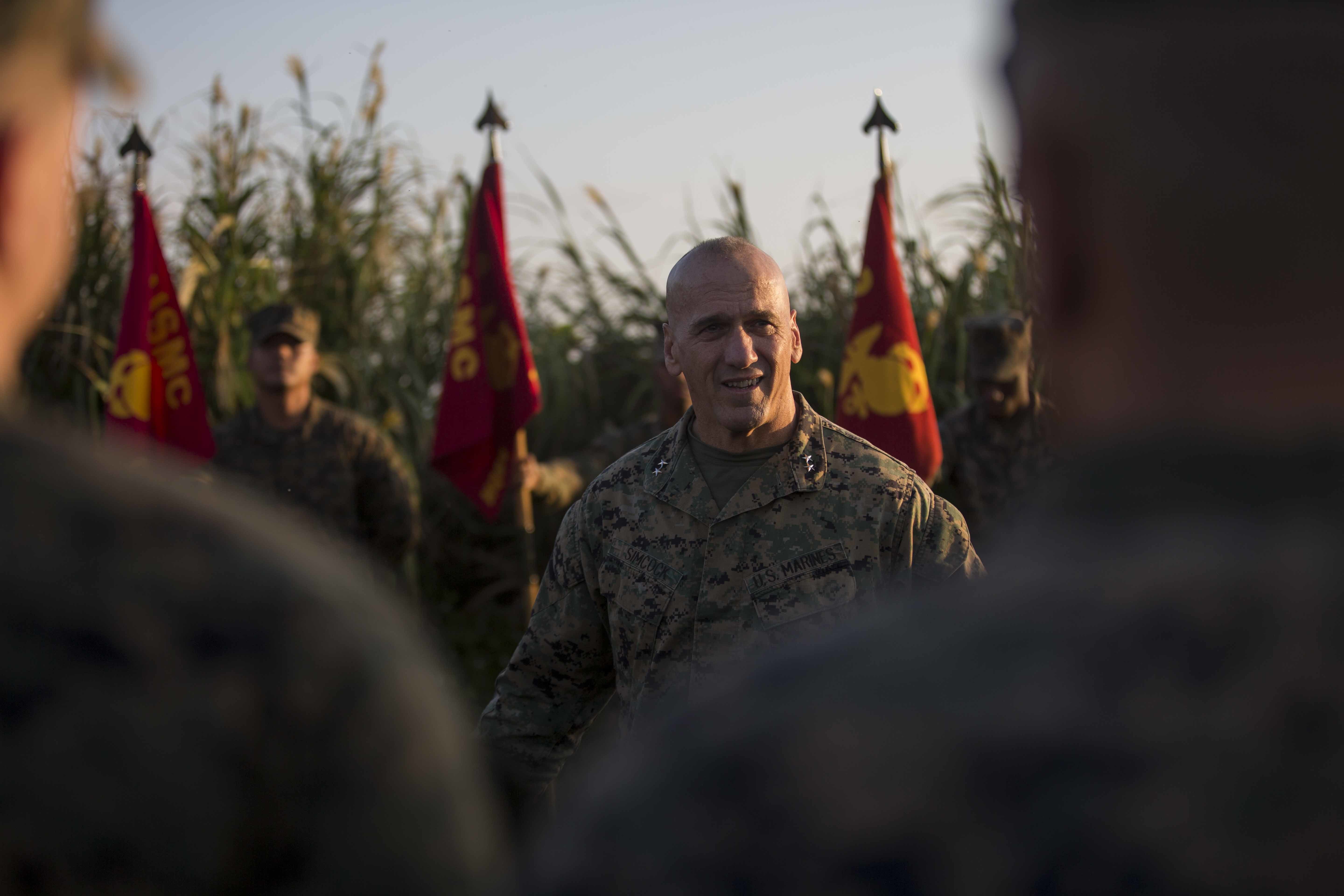
“Could you imagine what I could have been doing if I didn’t just have just one ship, the Green Bay (LPD-20), that I was able to steal for about five days as it got done with CARAT and went into maintenance for the next 75 days,” he said.
“What if I had, I don’t know, four or five ships that were dedicated to the division and the combat power that they can bring to bear at the place and time of our choosing?”
Simcock said he has everything he needs from the Marine Corps – “I am trained, manned and equipped, I have everything the division needs,” he told USNI News. What he needs is more ships from the Navy.
“The uniqueness to 3rd Division, as I said … I am literally spread thousands of miles. Mobility is my key capability that I have to have, in peace and war, and right now that’s my challenge.”
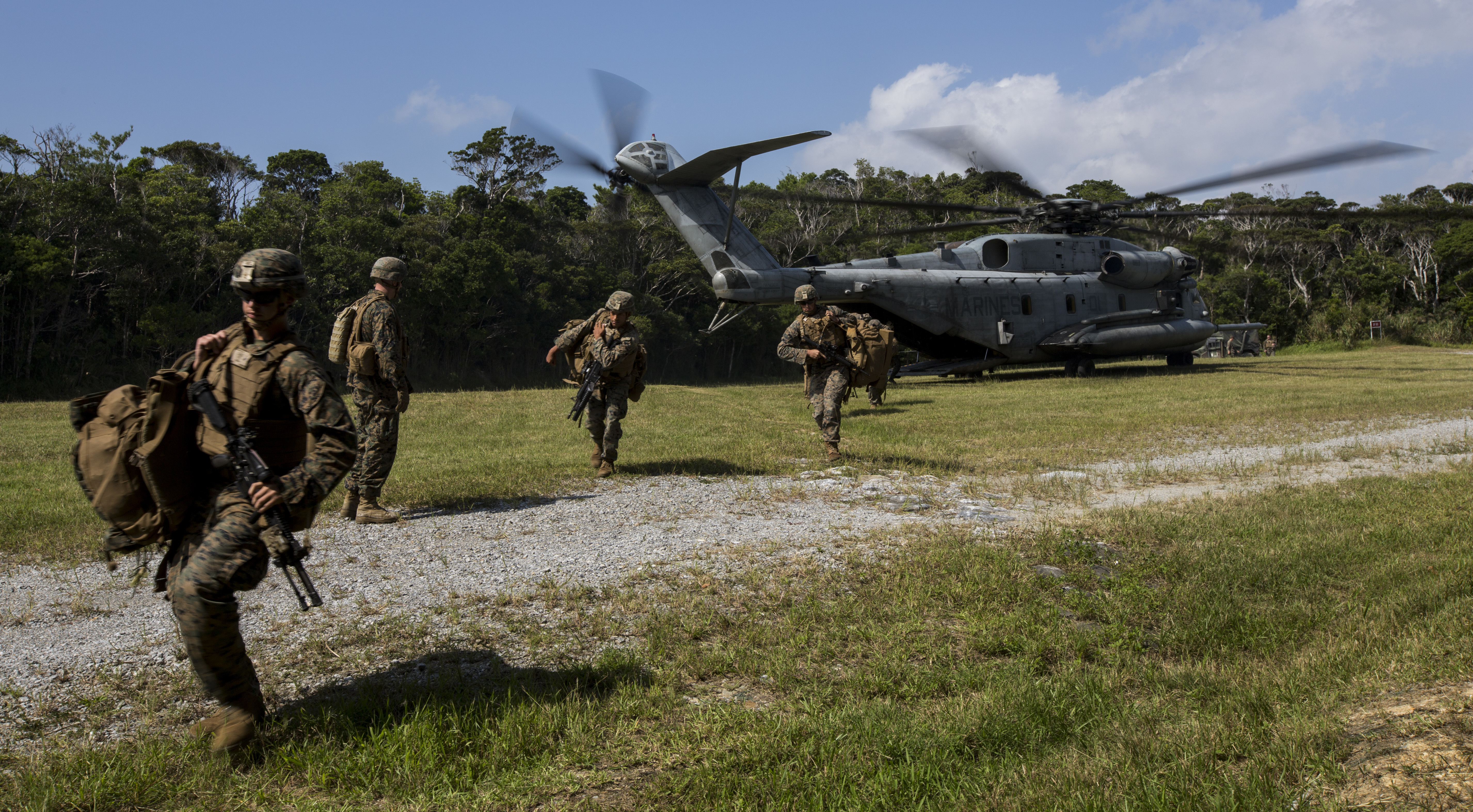
A Different Future Force
The Navy and Marine Corps currently find themselves with fewer amphibious ships than they need and too small a budget to do much about it. The Marines state they need 38 ships to support a two-MEB entry force, but the Navy and Marine Corps have agreed to a budget-constrained goal of 33. The services today have 31 amphibs active in commission.
To meet all the combatant commanders’ needs for amphibious forces, though, service leaders have said the fleet would need more than 50 amphibs. While it is not yet known how many amphibs the Navy will aim for going forward – the service should soon release both a Force Structure Assessment that states how many ships of what kind the service needs, along with the Future Fleet Architecture studies that take a more open-ended look at what a future force may be composed of – the CSBA study on amphibious operations calls for 40 ships and is a good indication that the Navy may consider a larger amphibious fleet going forward.
According to CSBA’s report, the Navy and Marine Corps should grow their amphibious forces, morph the big-deck amphibious assault ship into a catapult-launch/arrested recovery light carrier, add a vertical launching system (VLS) to the smaller amphibs and station more forces forward to help the Navy and Marine Corps better prepare for a high-end fight.
Importantly, the CSBA report calls for a greater reliance on aviation to conduct missions at long ranges. Noting that the MV-22 Osprey can only lift the un-armored Internally Transportable Vehicle (ITV) that can tow a Howitzer, the report calls for lighter Marine Corps ground vehicles. It calls for a new concept of surface connectors – suggesting that the ideal of a high-speed Amphibious Combat Vehicle that self-deploys from ship to shore but is optimized for ground combat may no longer be useful, it instead calls for connectors optimized for open ocean transport to drop off ground vehicles on the beach. And it calls for the acquisition of ground-based long-range precision fires, the addition of VLS to LPDs and LSDs, and the development of long-endurance unmanned aerial vehicles for targeting.
Most surprisingly, though, the report states that the Navy’s Flight 0 America-class amphibious assault ship design – which eliminated a welldeck and instead focuses the ship on aviation support – is preferable to the updated Flight I design, which re-introduces a smaller well deck beginning with the third ship in the class, the future Bougainville (LHA-8). CSBA recommends reverting to the Flight 0 design in the short term and eventually transitioning to a conventionally powered catapult-launch light carrier, similar in size to a Midway-class carrier. To offset the loss of the well deck, CSBA would have the Navy deploy four-ship Amphibious Ready Groups instead of three-ship ARGs – adding a second LX(R) dock landing ship (LSD) replacement to provide about four more helicopters and two surface connectors.
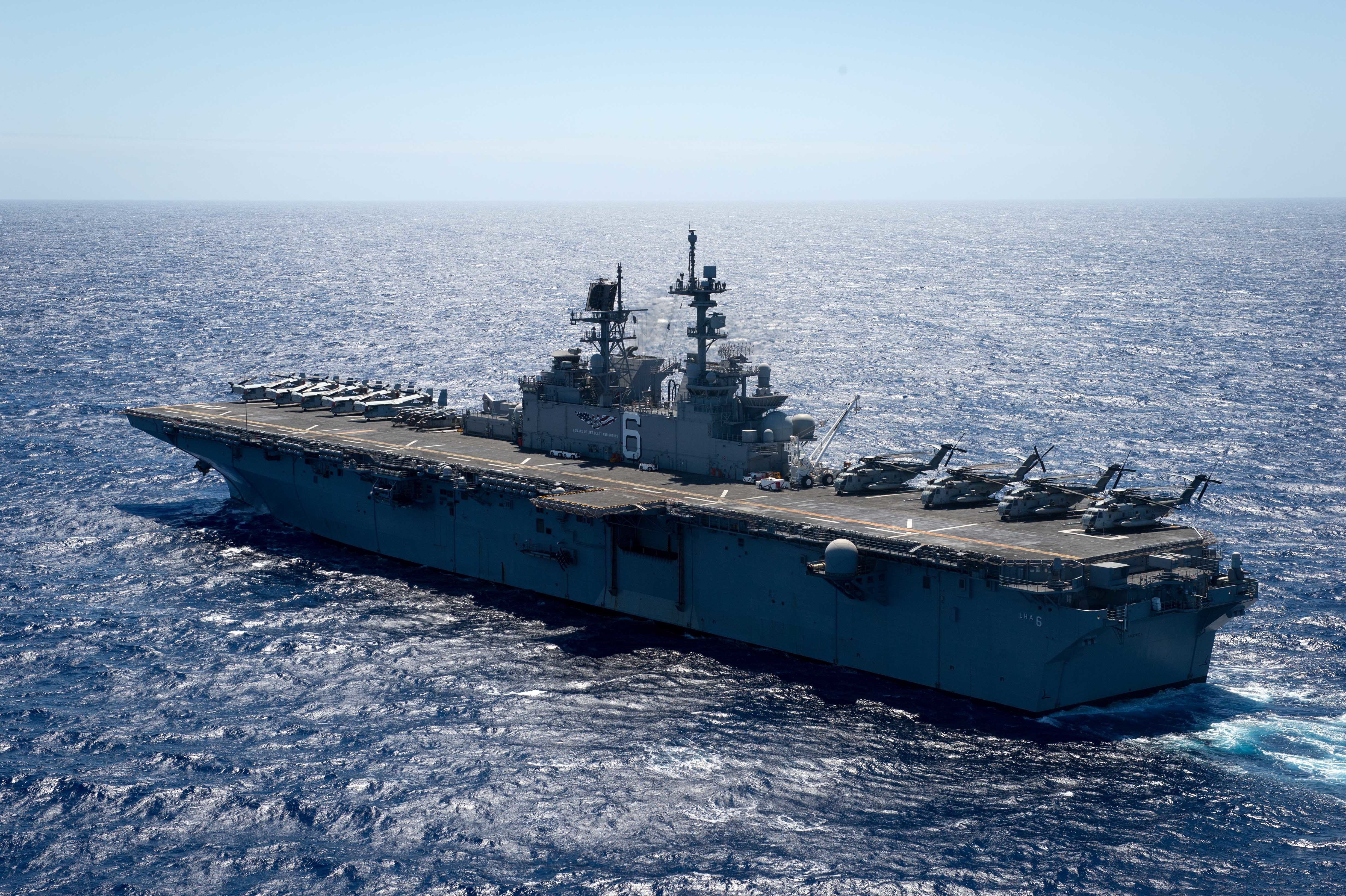
Ultimately, CSBA’s plan calls for 11 big decks – both the current amphibious assault ships and the future light carriers – and 29 smaller LPDs and LX(R)s. About three big-decks and eight smaller amphibs would be stationed forward as part of the Forward Deployed Naval Force (FDNF) in the Pacific, Mediterranean and Persian Gulf. They would have shorter training cycles to create more operational time at sea, and to reduce training they’d focus specifically on their geographical location and likely operational requirements instead of the full range of military operations. Among the rest of the amphibs, a separately trained force would serve as a backstop, being ready for missions in these areas of operations that are outside the training of the FDNF forces.
Brig. Gen. Roger Turner, the Marine Corps’ director of the Capabilities Development Directorate, said at the CSBA report rollout that he agreed with many of the ideas within the report but had reservations about training to a limited mission set instead of being prepared for any battle against any adversary. He also told USNI News that amphibs with both a flight deck and a well deck are best positioned for all potential military operations – from humanitarian assistance to high-end warfighting – and that taking away the well deck reduces the flexibility of these ships. In today’s sized fleet, he said that decrease in flexibility would be untenable, but in a larger amphibious fleet the Marines might be willing to sign on to having some specialized ships like the light carrier and some full-spectrum amphibious assault ships.
Similarly, CSBA’s deployment and readiness model relies heavily on the MEU construct rather than the MEB and division-level groups that Simcock said last week the Marine Corps and Navy need to focus on, which could lead to some reservations from Marine leadership if the Navy were to implement CSBA’s recommendations. Still, having 40 amphibs instead of today’s 31 could go a long way in fulfilling what Simcock often calls his Christmas wish – more amphib ships for the 3rd Marine Division.





